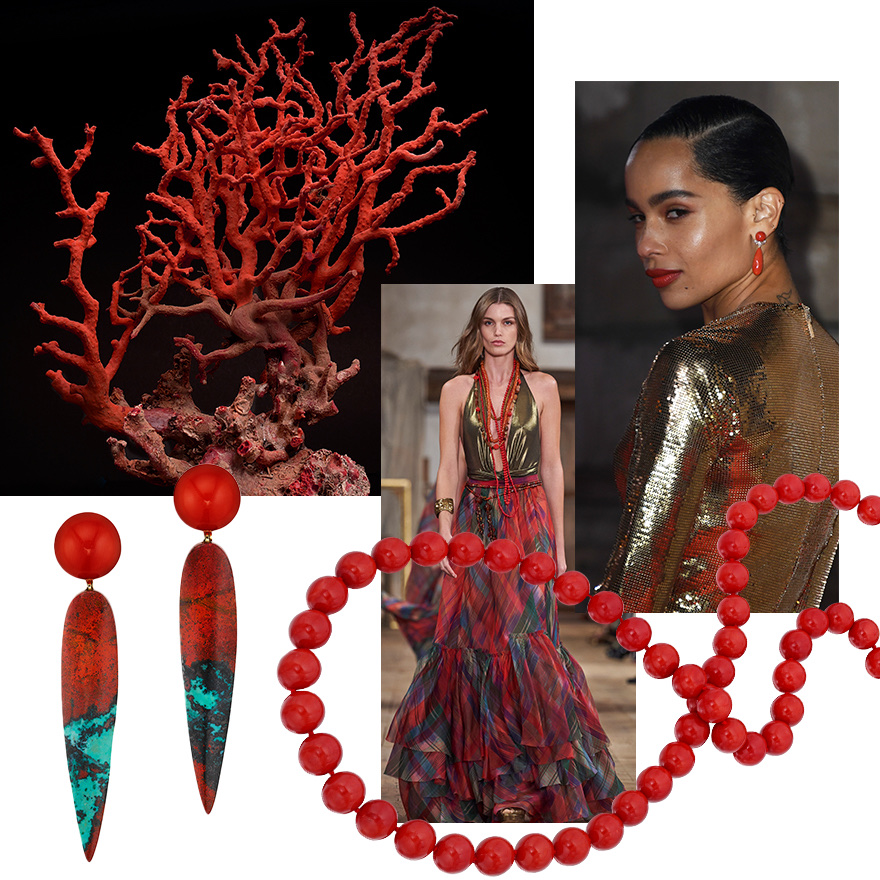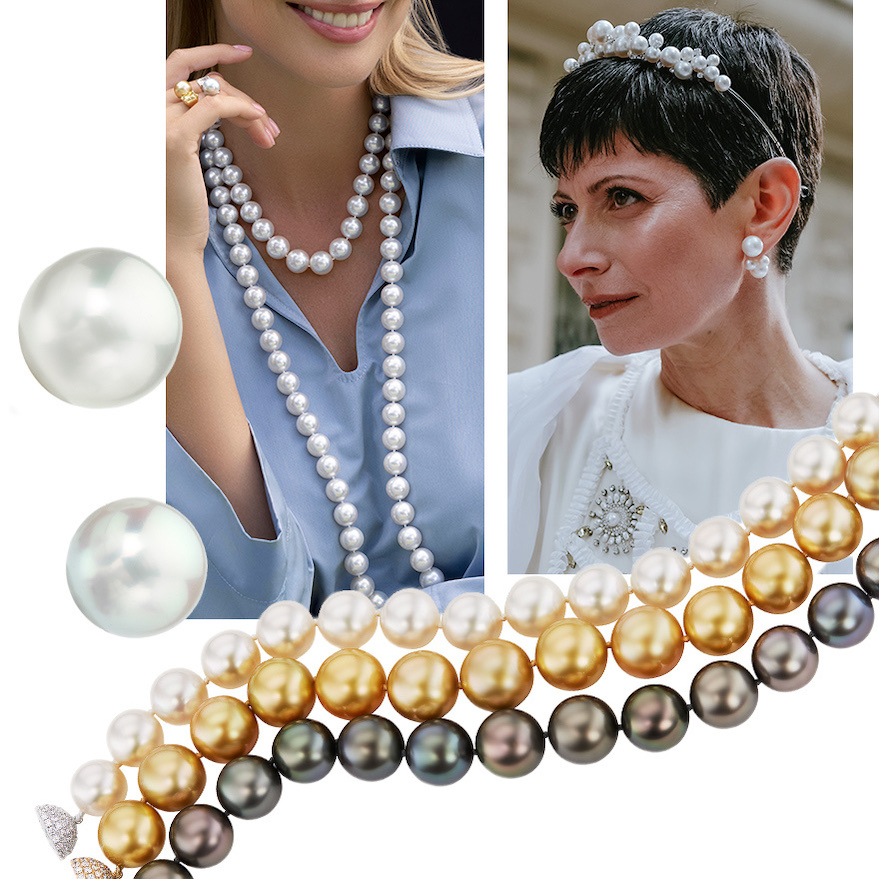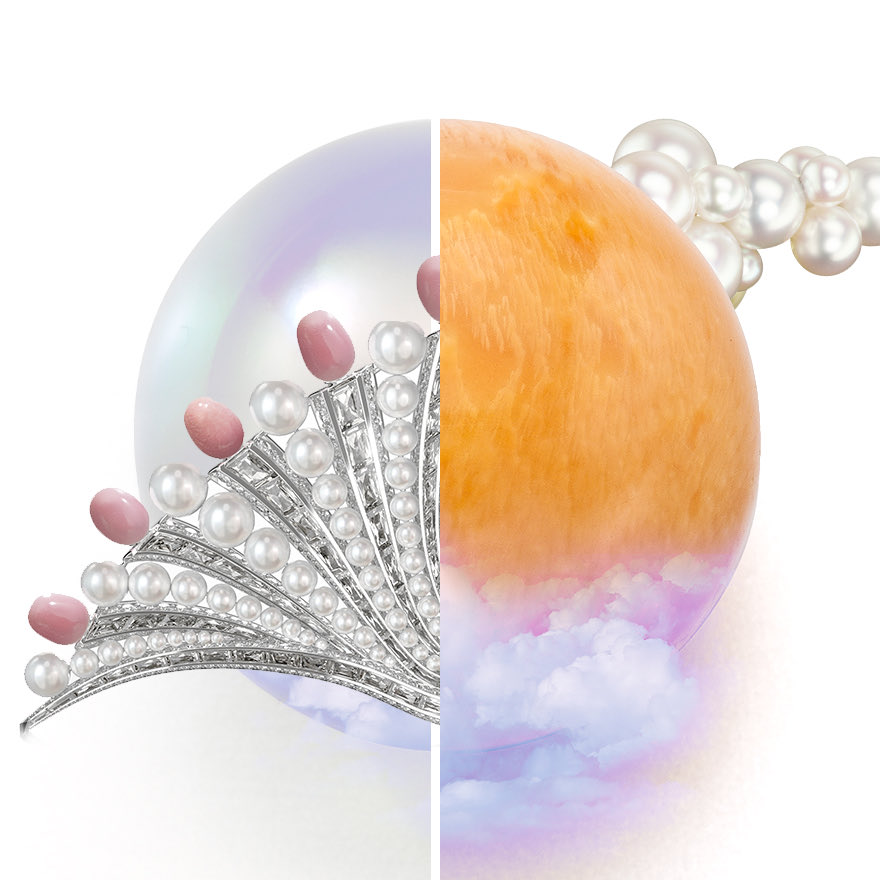
Introduction to Pearls – Understanding Nacreous and Non Nacreous Pearls
What is it about pearls that makes them so desirable? The special ‘glow’ or luster created by a pearl’s nacre is a soft alluring radiance that has made the human complexion look more beautiful than any other gem. Hence the pearl’s storied place in history, romance and lore. Pearls have always engaged our emotions in powerful ways. Their natural beauty is unenhanced by man, with no need for cutting or shaping.
Let’s examine nacreous pearls and compare them to non-nacreous pearls as we consider the various factors that make pearls valuable and so very meaningful in our lives.

Chart comparing the value factors for nacreous and non-nacreous pearls
NACREOUS PEARLS – AKOYA, SOUTH SEA, TAHITIAN, GOLDEN, FIJIAN
Nacreous pearls come in a wide variety of types including South Sea pearls, Tahitian pearls, Akoya pearls, Golden South Seas and Fijian pearls. In terms of shape, they vary from round to irregular (baroque). These pearls are formed of a substance called nacre (pronounced nay-kur) that is composed of calcium carbonate (aragonite) and conchiolin. This natural material, nacre, is secreted by an oyster mollusk and wrapped in layers over time, eventually forming a nacreous pearl. For more details about the pearl cultivation process, click here.
Nacre is a big part of determining the quality of the pearl, regardless of whether the pearl is natural or cultivated. As you can see in the chart above, the most important factors that affect a pearl’s value are its luster, size, shape, color and complexion or smoothness.
Nacre will usually match the color of the mother of pearl “lip” or outer edge of the mollusk’s shell; therefore, the color of the nacre, which is directly influenced by the genus of the oyster, will determine the color of the pearl. The nacre is also what causes that beautiful glow that we all love so much about pearls. The thicker the nacre, the higher the luster of the pearl and the longer it took to form inside the oyster.
The luster could be impacted by the next quality measure – the surface of the pearl. If there are blemishes or flaws in the pearl’s surface, it can affect the value of the pearl and potentially decrease the wonderful glow of the luster. The surface complexion or smoothness of a pearl is an important element in a pearl’s ultimate value.
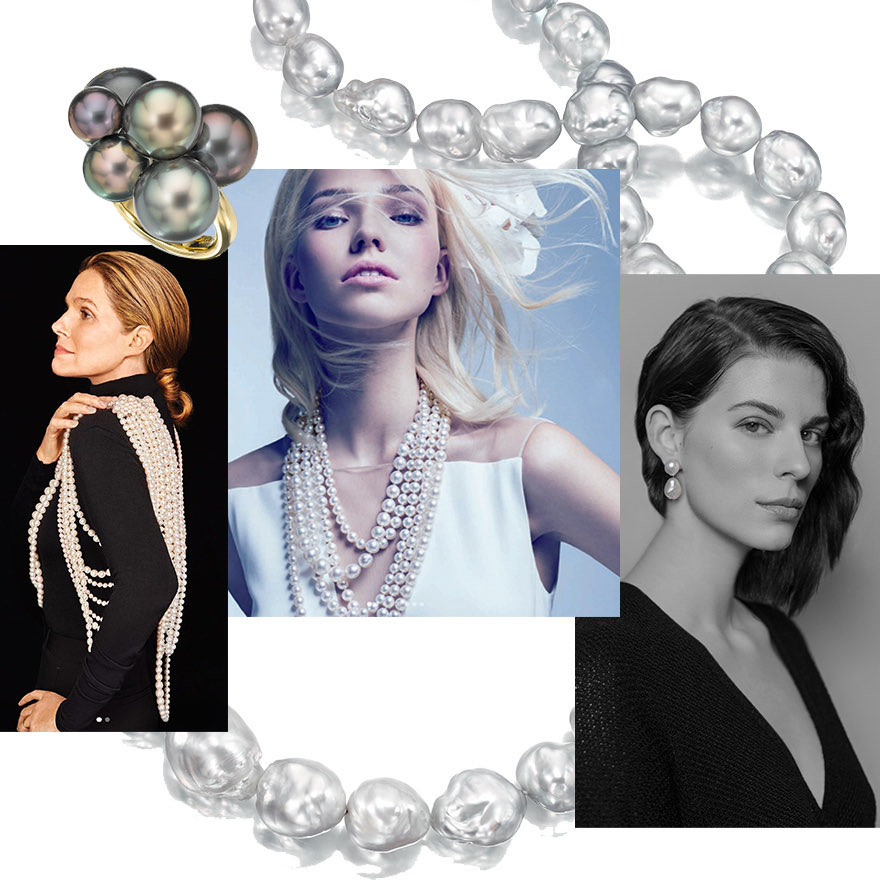
Clockwise from Upper Left – Tahitian Bubble Ring by Sean Gilson for Assael, Assael Baroque South Sea Pearl Necklace, Model wearing Assael Baroque South Sea Pearl Drop Earrings, Assael multi-strand Akoya Pearl necklace in Neiman Marcus Look Book, Aerin Lauder as photographed by @ruvenafanador for Town & Country February 2020 wearing Assael pearls
Lastly, the size of a pearl can also affect its value. If all other things are similar (luster/nacre thickness, smoothness of complexion, color and shape), then a larger pearl will command a higher value. But it is rare for all of these factors to be equal, so it could happen that a strand of smaller millimeter size pearls could be more valuable than a strand of larger pearls, for example if the smaller pearls had much smoother complexions and greater luster.
The conditions of the ocean during the years that a pearl is growing inside an oyster are critical to success when cultivating nacreous pearls. Oysters are filter-feeders, meaning they filter through thousands of gallons of ocean water as they search for food. This is the reason that many pearl farms are usually located in remote regions not overly close to big cities that create human pollution which could harm the oysters. For a pearl farm to be successful, the environment must be as pristine as possible. Pearl farming, therefore, is largely intrinsically sustainable.
NON-NACREOUS PEARLS – CONCH, MELO MELO
Non-nacreous pearls are composed of calcite (not nacre/aragonite). Technically, these pearls are classified as calcareous concretions, but they are commonly referred to as pearls. Unlike the pearls mentioned above, non-nacreous pearls are all natural and cannot be cultivated. According to Rui Galopim de Carvalho, FGA DGA and gemology specialist for the World Jewelry Federation CIBJO, “these non-nacreous pearls are weaker in internal structure than nacreous pearls” and can therefore be easily cracked. However, he continues, “they are still extremely valuable owing to their rarity, natural provenance and natural formation.”
There are a few types of non-nacreous pearls, but here we will limit our discussion to the most beloved, including Conch and Melo Melo.
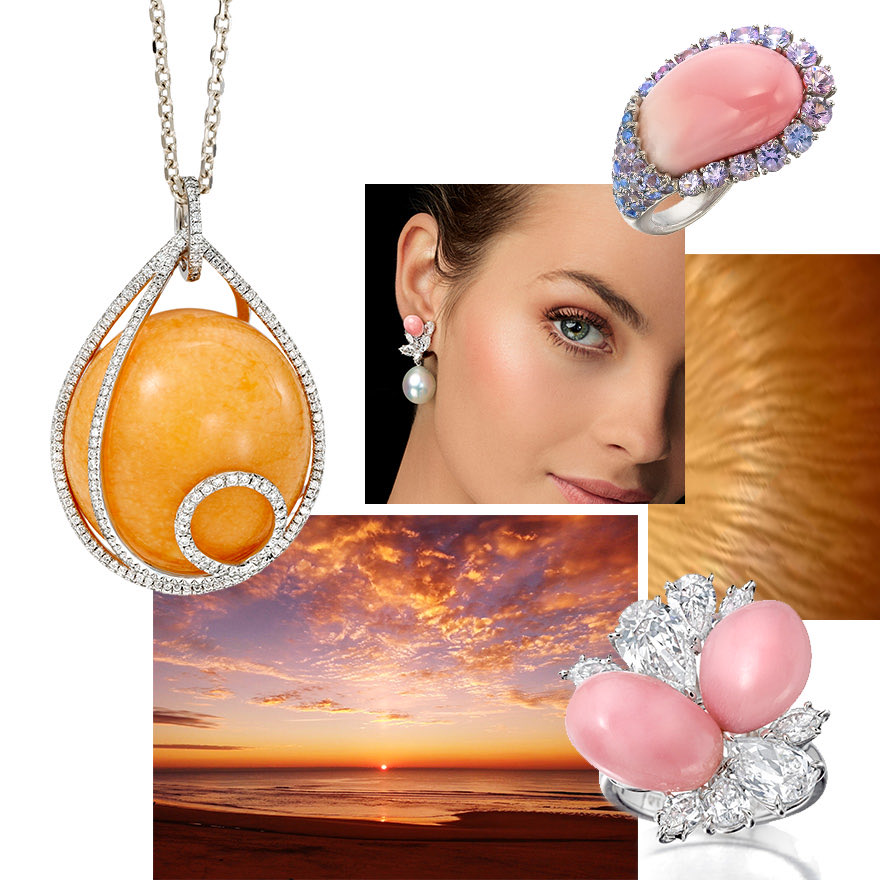
Clockwise from Upper Left – Assael Diamond Cage pendant necklace featuring a removable Melo Melo Pearl, Assael Natural Conch Pearl and South Sea Pearl Earrings, Assael Natural Conch Pearl and Lavender Spinel Ring, Close-Up of Flamelike Feather Pattern on Melo Melo Pearl, Assael Natural Conch Pearl and Diamond Ring, Sunset
Conch Pearls are the product of the large marine gastropod called the Queen Conch mollusk. Native to the Caribbean, these mollusks live and produce pearls in the waters near the Bahamas, Belize, Guatemala and Honduras. Conch Pearls are composed of calcareous concentrations of concentric layers of fibrous crystals and are very rare. According to the Gemological Institute of America (the GIA), “the probability of finding a conch ‘pearl’ is about one in a thousand,” meaning that out of a thousand Queen Conch mollusks only one will have a pearl inside. And of those rare finds, far fewer (less than 10%) are gem quality. Gem quality conch pearls are exceedingly rare and very valuable.
In terms of color, we typically think of Conch Pearls as pink, but they actually range in hue from browns to honey-colored to deep honey reds and the palest of pinks. The pink tones are the most desirable.
The finest Conch Pearls have a burst of light, a swirl or a flame-like pattern that makes them highly prized. They also have a porcelaneous sheen that contributes to their alluring beauty and desirability. Size also affects the value of Conch Pearls as the larger sizes are even rarer.
Melo Melo Pearls originate in the waters of the South China Sea and the Andaman Sea, with Vietnam producing the finest and most sought after examples, followed by Burma and Thailand. Like Conch Pearls, Melo Melo Pearls are non-nacreous and formed of calcite. They grow in the marine gastropod species Volutidae, commonly known as the Melo Melo large sea snail. Melo Melo Pearls range in hue from bright orange to tan to brown. The specimens originating in Burma are a somewhat darker honey color with a dotted pattern. The luxurious and prized orange hues are found in Vietnam and were historically turned over to the King of Vietnam. There are many wonderful legends about the Vietnam Melo Melo.
Similar to Conch Pearls, the most highly prized Melo Melo Pearls also have a feathered and flame-like pattern and that lovely porcelaneous sheen. Vietnam produces the finest and most sought after examples with patterns of feathering and flame that add to their scarcity. According to Robb Report, “it is estimated that only one in every several thousand melo melo sea snails produces a pearl of notable size.” The rarity and beauty of these pearls can drive prices to dizzying heights.
As you can see, the value measures for nacreous pearls and non-nacreous pearls are very similar but with some meaningful differences. Nacreous pearls are primarily valued in terms of their luster (nacre thickness), surface complexion, color, shape and size. Non-nacreous pearls are valued more for their rarity, color, size, shape, feathering and flamelike patterns and their porcelaneous sheen. Whichever type of pearl you prefer, be informed before you shop and ask to see the various quality factors mentioned above.
To discover beautiful jewelry designs with all of these types of pearls, visit the Assael website.
If you liked this post, you might also like:
Thinking Pink : Why Conch Pearls Are So Much More than Pretty
Hello Melo! Learn What Makes This Vibrant Natural Pearl So Valuable
Global Guide to South Sea Pearls
Posted on Jul 16, 2020 in Pearl Education by Duvall O'Steen
Articles you may also enjoy
Join our Mailing List
Join us for magnificent pearl trends and exclusive treasures. Discover a world that is truly ... beyond rare.

Feeling inspired?
Consider this your invitation to the House of Assael. Find your closest luxury jeweler using our map search and start your journey to timeless elegance.


